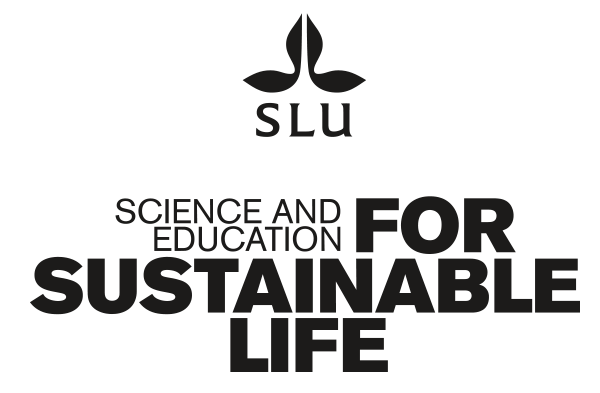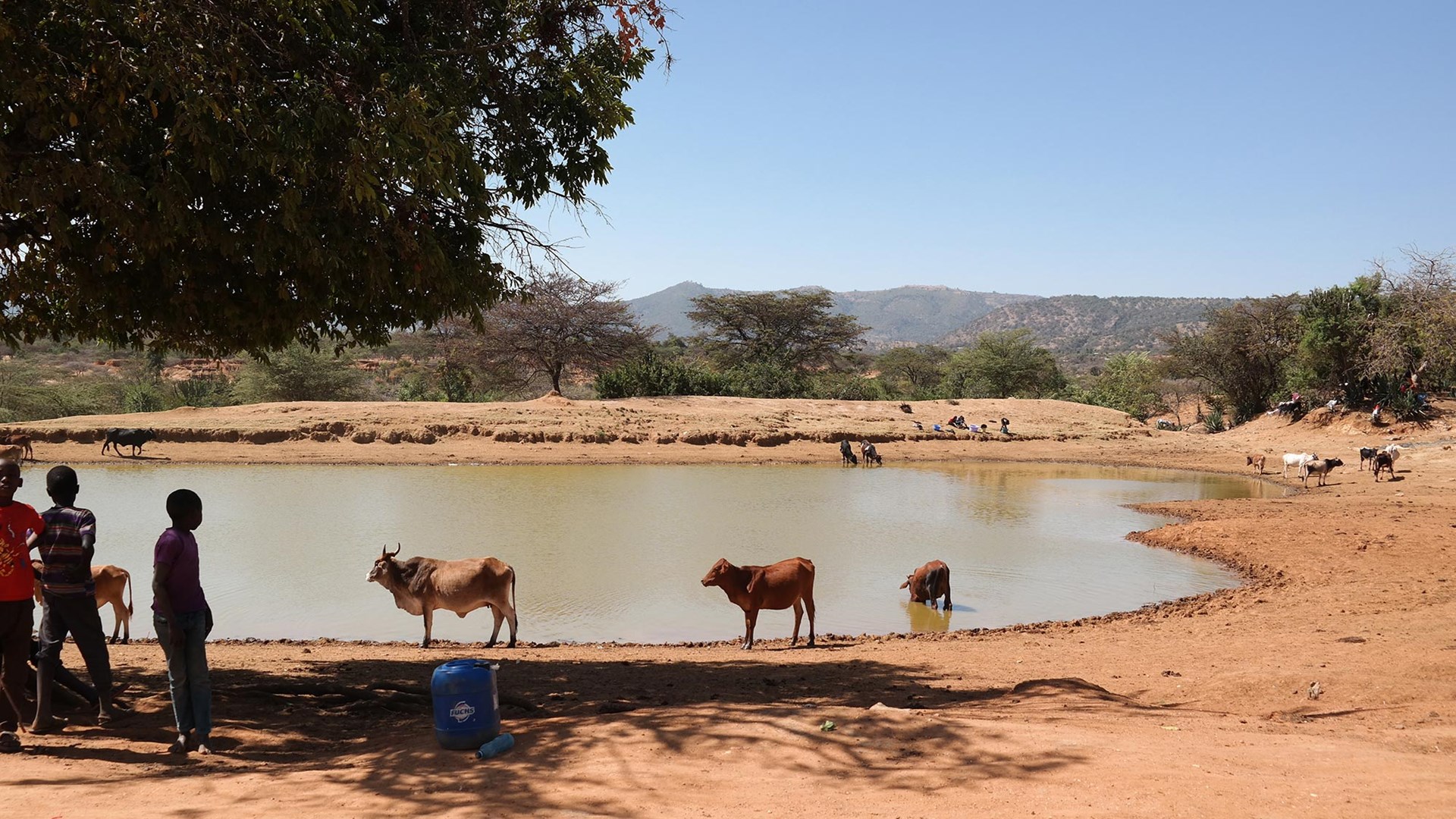
Natural and sometimes manmade water dams are what keeps the livestock alive during droughts.
Photo: Malin Planting
Without water, there is no life. Around the world, there are drylands where there is not enough rain to support crop production. Most people who live in these regions are pastoralists, earning their livelihoods from keeping livestock; plants may dry up – but livestock can be herded and taken to other areas. One such area is the Karamoja cluster in the border region between Uganda and Kenya. Here, SLU is leading a team of researchers from six universities and two organisations in the interdisciplinary Drylands Transform project, financed by Formas.

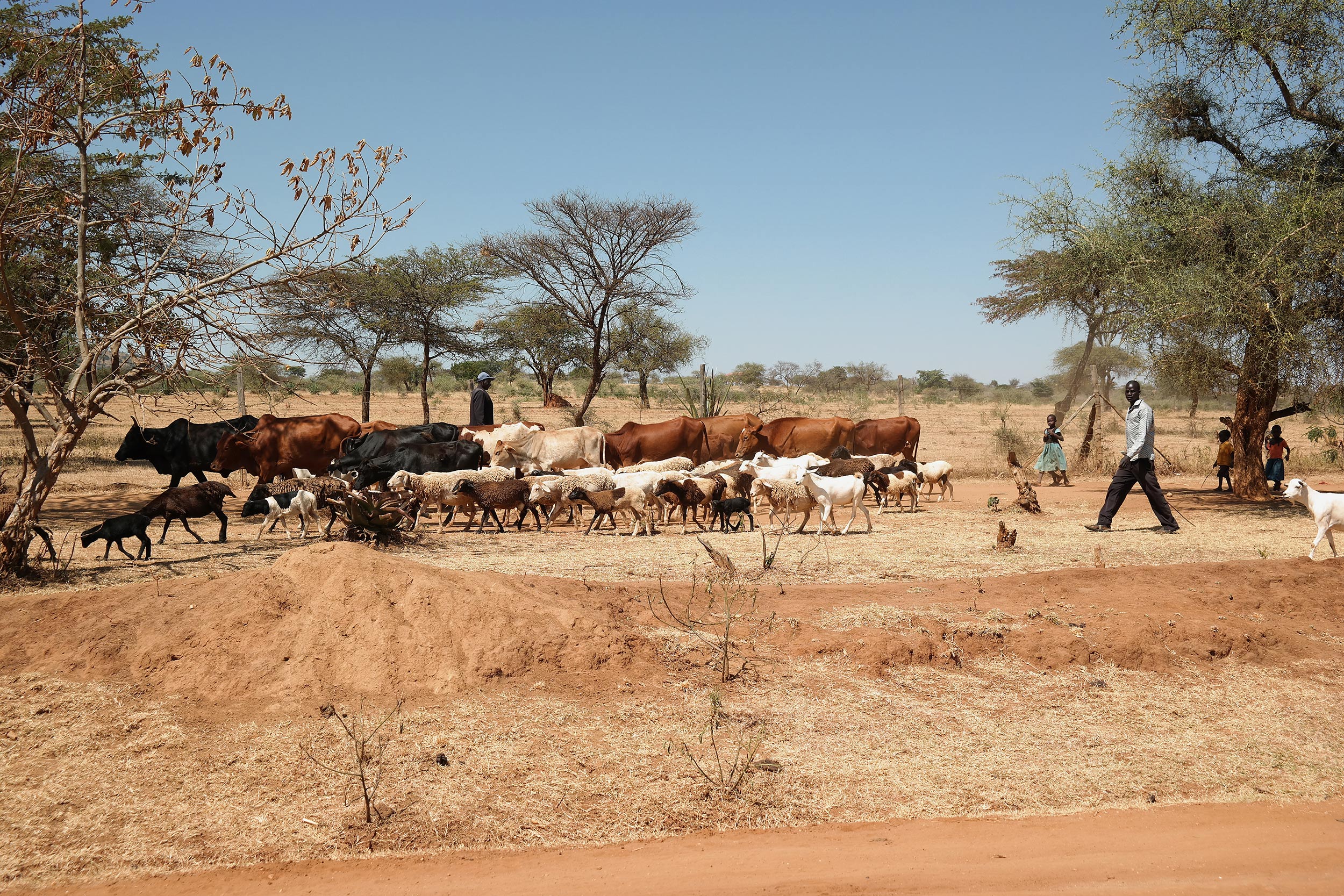
In dryland areas, the most common way to survive is to keep livestock that can migrate in need of water and fodder. Kenyan livestock keepers often cross the border to Uganda in search of grass. Photo: Malin Planting

Climate and livestock
The fact that livestock can be relocated to pastures and water sources is the reason why fifty per cent of the world’s livestock population can be found in drylands. In fact, drylands cannot be used for many other purposes. However, great challenges exist, which are exacerbated by the more erratic rain conditions caused by climate change. Over the past two decades, severe droughts have occurred as often as every three years, resulting in the death of a large portion of livestock. This places a great strain on households who are already living in poverty. When the rain eventually comes, the bare ground with its compacted soil cannot absorb the water, causing flooding. A local agricultural officer who collaborates with the project has explained that while the ground may be dry, there is water in the area – which is evident from the gullies that have formed.
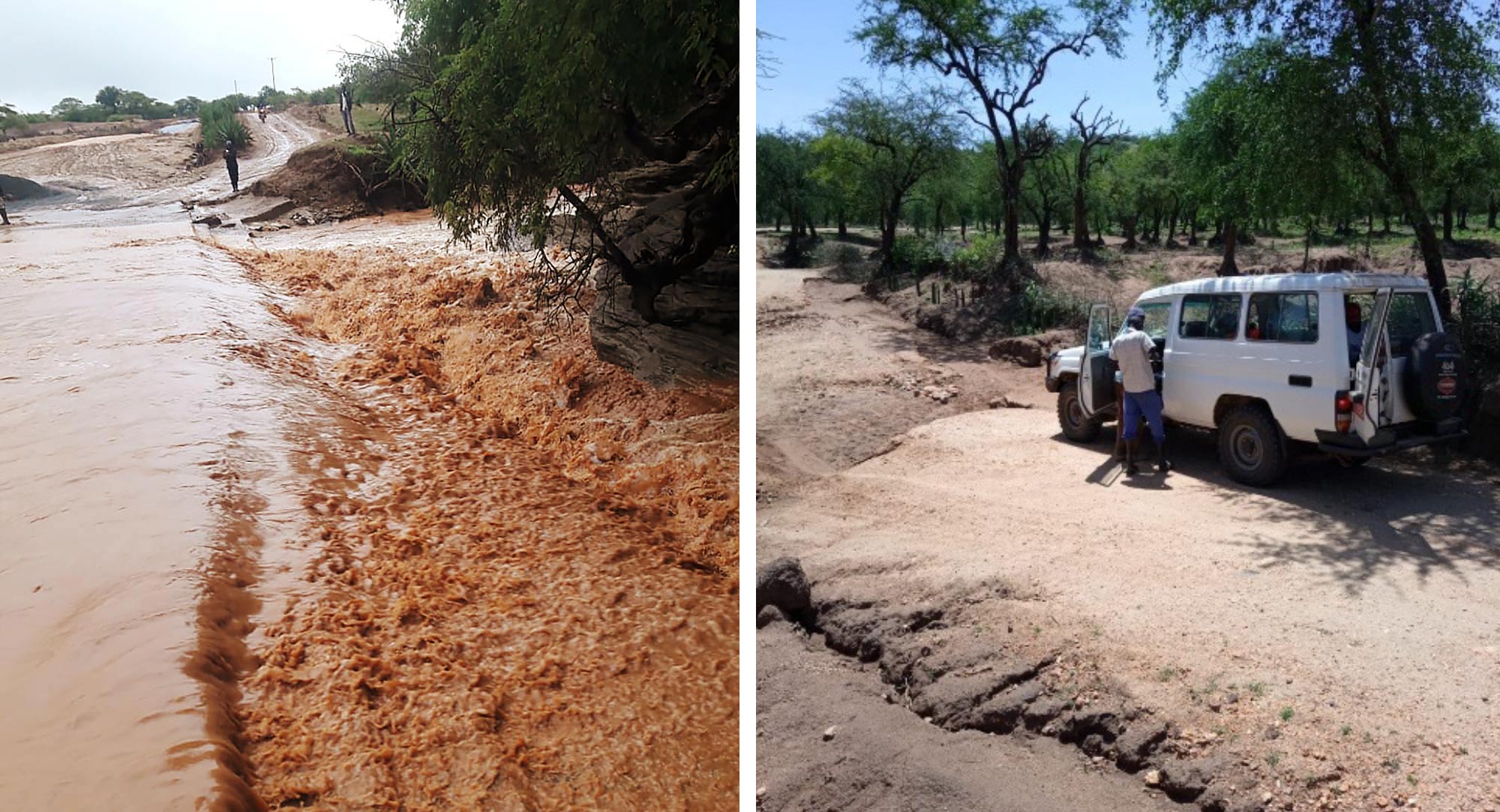
The rains have become erratic and unpredictable both in amount and timing. When rains suddenly come, the soils are not prepared to receive the water and topsoil get flushed downhill. Part of the year, the roads can be impassable. Photos: John Maina and Benjamin Lokorwa
Erosion becomes severe when there is not enough vegetation to hold the soil in place. Rains wash away the bare soil and create gullies where nothing can grow. Aida Bargues Tobella, a researcher at the Department of Forest Ecology and Management at SLU has been working with erosion-prone soils for many years. Together with her colleagues, she is following a worldwide system of evaluating the soil status based on taking soil samples, mapping vegetation and carrying out water infiltration tests. She describes her work as a puzzle where all the pieces are gathered and assembled to form the bigger picture that helps us understand the situation.
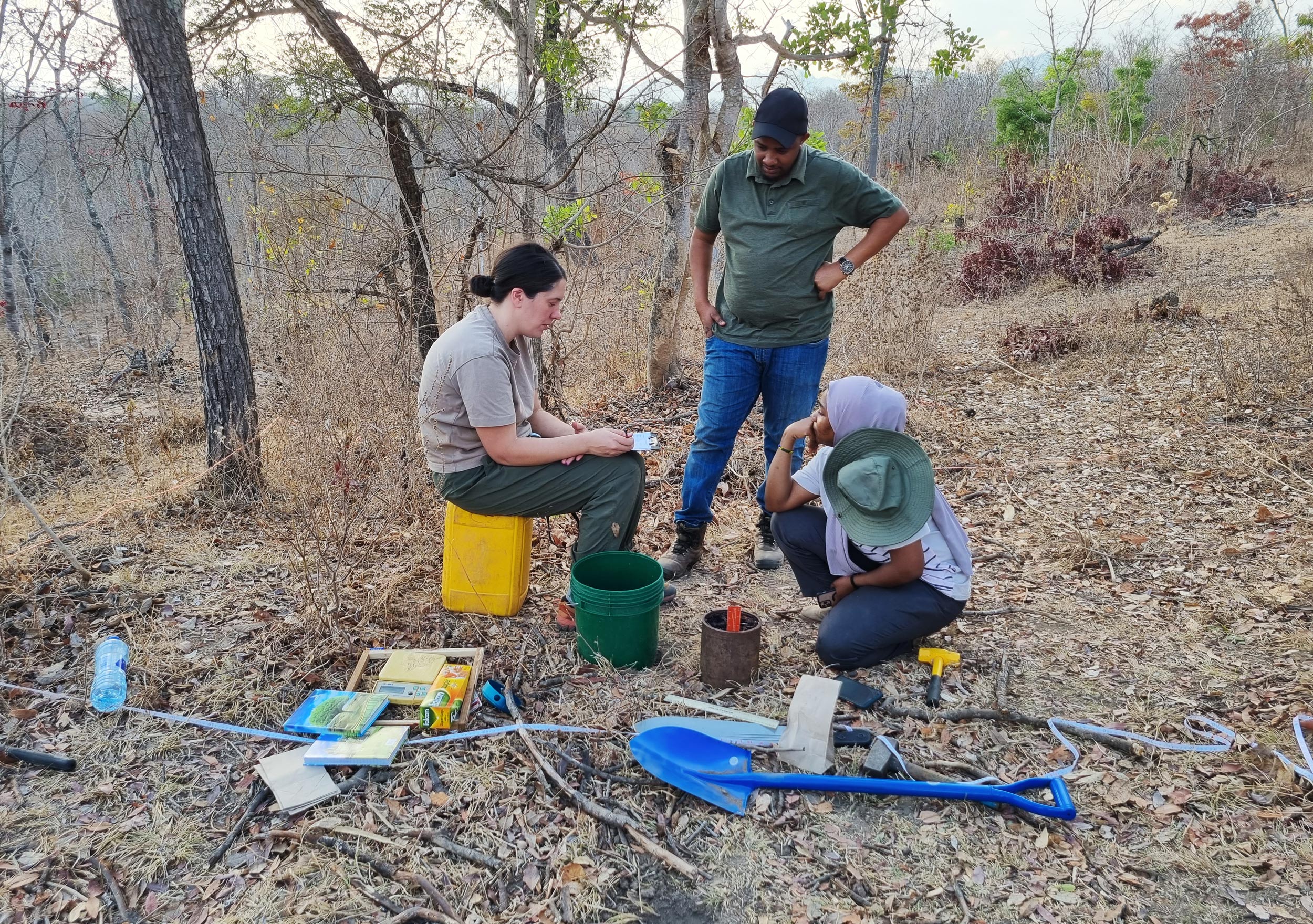
Aida is carrying out a water infiltration test together with two colleagues. The slower infiltration rate, the more risk of flooding and soil erosion. Photo: Gert Nyberg


Natural and sometimes manmade water dams are what keeps the livestock alive during droughts.
Photo: Malin Planting
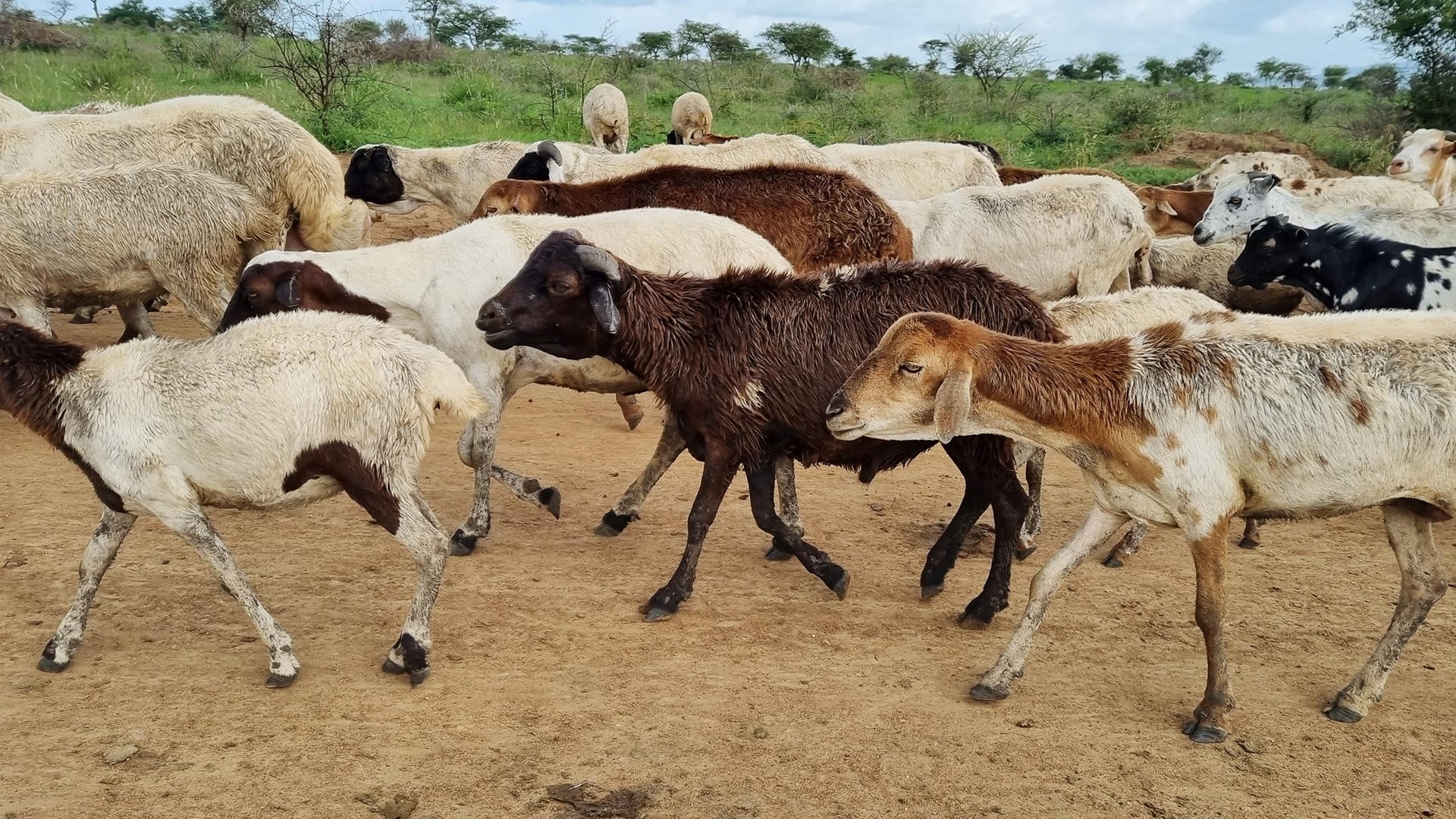
Apart from cattle, the herders keep a lot of sheep and goats that are browsers and feed on other then grasses and also can manage with less fodder and water compared to cattle. Generally, the drylands in Uganda are less degraded and less dry compared to Kenya.
Photo: Ylva Nyberg
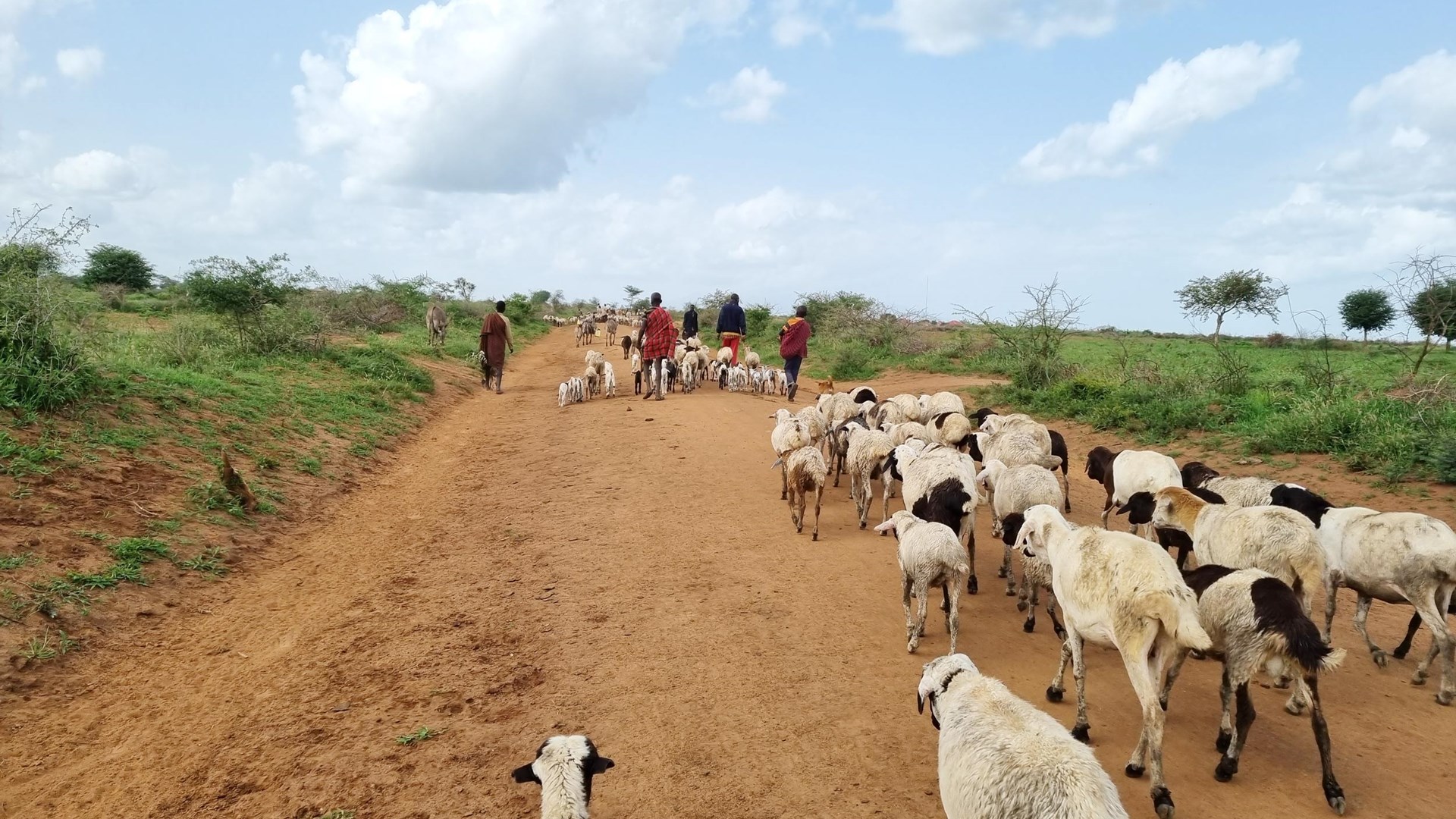
Herders walk long distances and sometimes sleep on the way with their animals. They can stay away for weeks or months if the drought prolongs. Here the herders are on their way back home with the youngest lambs being carried on their arms.
Photo: Ylva Nyberg
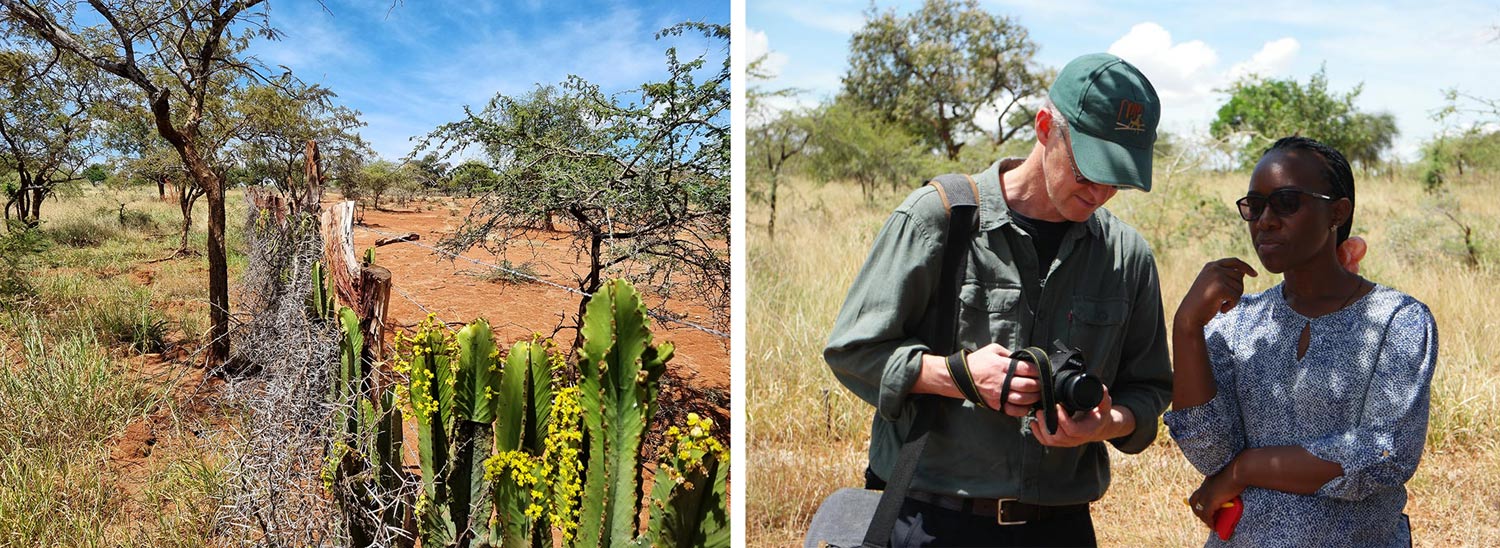
Combined demonstration and experimental sites (livestock cafés) are used to show and understand the different ways of planting fodder for livestock. Göran Bostedt and Alice Turinawe, researchers at the Dept of Forest Economics at SLU and Department of Agribusiness and Natural Resource Economics at Makerere University are figuring out from local communities the value of these demonstration sites in terms of getting and spreading knowledge for improving livestock production in the areas. Photos: Ylva Nyberg, Aida Bargues Tobella

Soil and livestock
Livestock are reliant upon the rangeland’s vegetation and consequently, the soil below. For vegetation to be able to grow, water needs to be able to infiltrate the soil. People can help to reduce the speed at which the water flows, enabling it to infiltrate the soil instead of washing it away. Areas can be fenced off for growing tall grass that can be harvested, stored and used for feed during dry spells. Crescent-shaped structures can be dug into the soil where land has already degraded in order to slow down the flow of water, and trees can be planted to enable water infiltration.
Master’s student Anna Swärd conducted her degree project on the role of trees in different ecosystem services in the drylands. She found that not only are certain trees in these areas significant to both food and feed, they also influence the microclimate for soil flora and fauna.
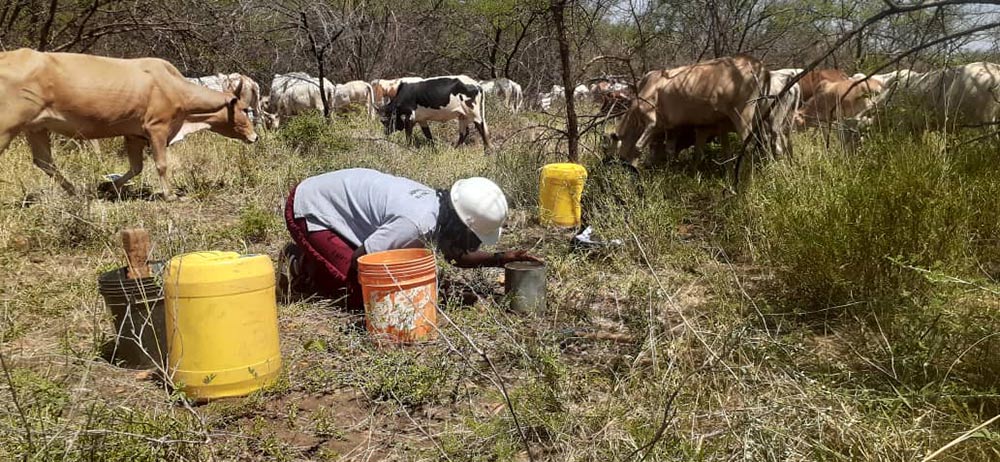
It is hard work and many hours in the field to gather all data in order to make largescale and long-term evaluations. Elizabeth Githendu is carrying out an infiltration test in the middle of migrating livestock. We are also having land rehabilitation experiments carried out in so-called Livestock cafés where we have seeded on degraded lands. Photo: John Maina
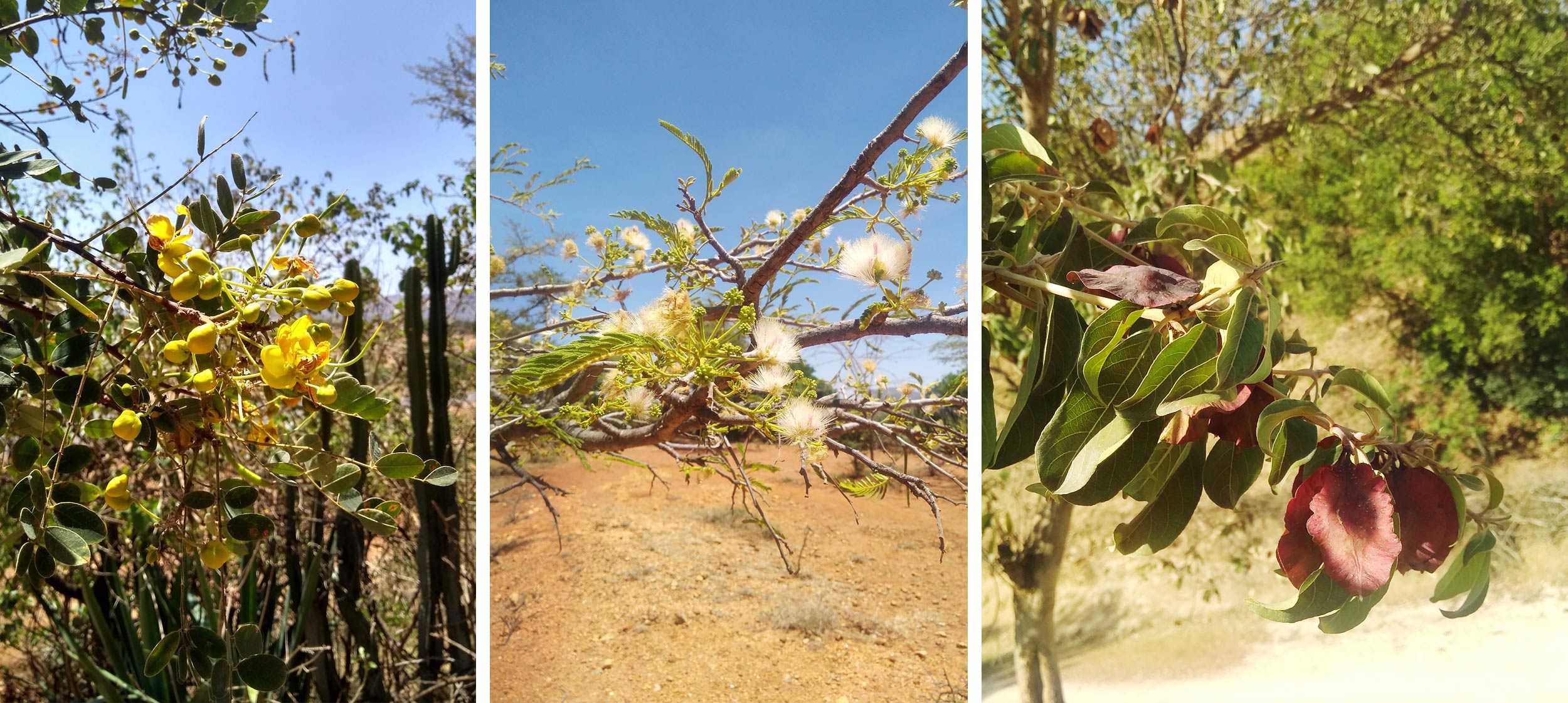
Different tree species had different properties. Several species were used for food, fodder, medicines and energy. However, the available tree species differ a lot depending on the type of land ownership. Photo: Anna Swärd
The research team links soil health with human wellbeing and livestock production. Soil health includes the infiltration capacity of water, the type of vegetation and the amount of vegetation throughout the greater landscape. The type and amount of vegetation can predict the number of livestock able to live on the land. Land management is closely related to land ownership, and land ownership in the drylands differs significantly; it may be privately owned, belong to the community or be property of the government. The right to access lands needs to be secure and flexible for those who move livestock depending on rain patterns.
Hence, different approaches are necessary depending on the geographical area. We work together with local communities to develop more sustainable methods of restoring and managing land in ways that are suitable in relation to how the land is owned.
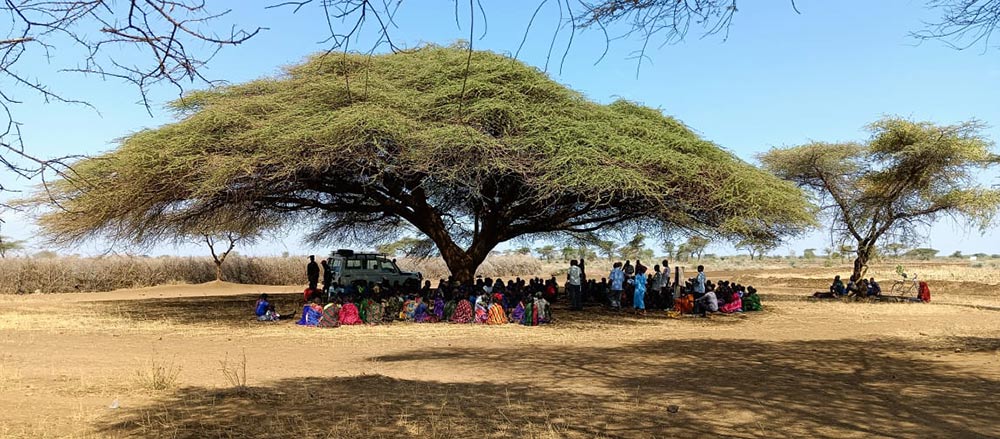
Throughout the research work, local communities are involved in planning, experimenting and as on the photo, in feedback sessions. Photo: Stephen Mureithi
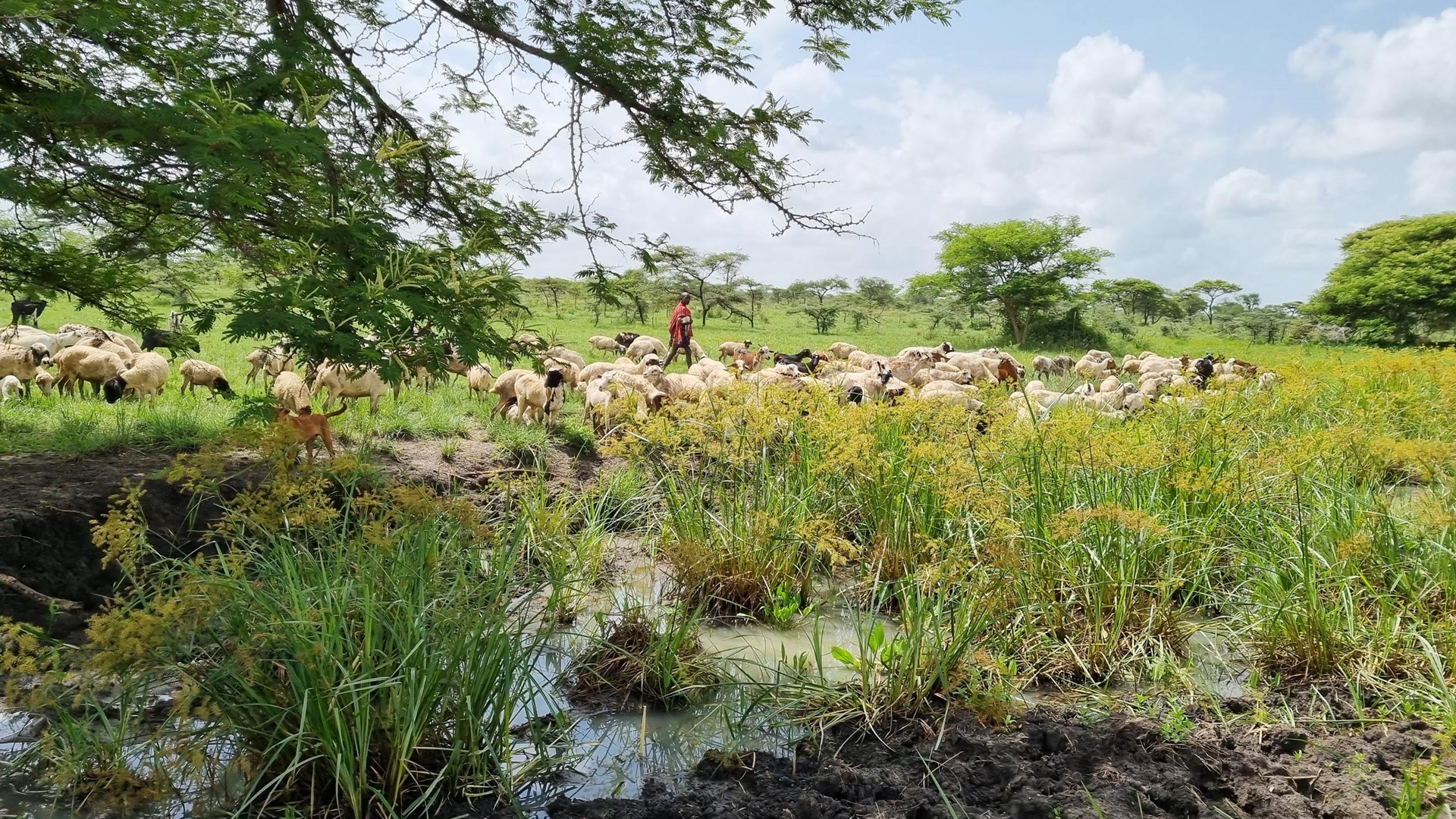
In areas where there is still enough water and fodder, conflicts can arise over land rights. Therefore it is important to involve the communities in land use discussions to try to find the best possible ways for agreements.
Photo: Ylva Nyberg
People and livestock
Livestock are the most common food and income sources for people who live in drylands. Milk is highly nutritious and very important, especially for young children. When access to feed and water becomes scarce, the men migrate with the livestock while women and children stay at home with limited resources. Our team uses questionnaires and body measurements to find out about the diets and health status of these women and children. The data we obtain provides us with important information about what they may be lacking from their diets.
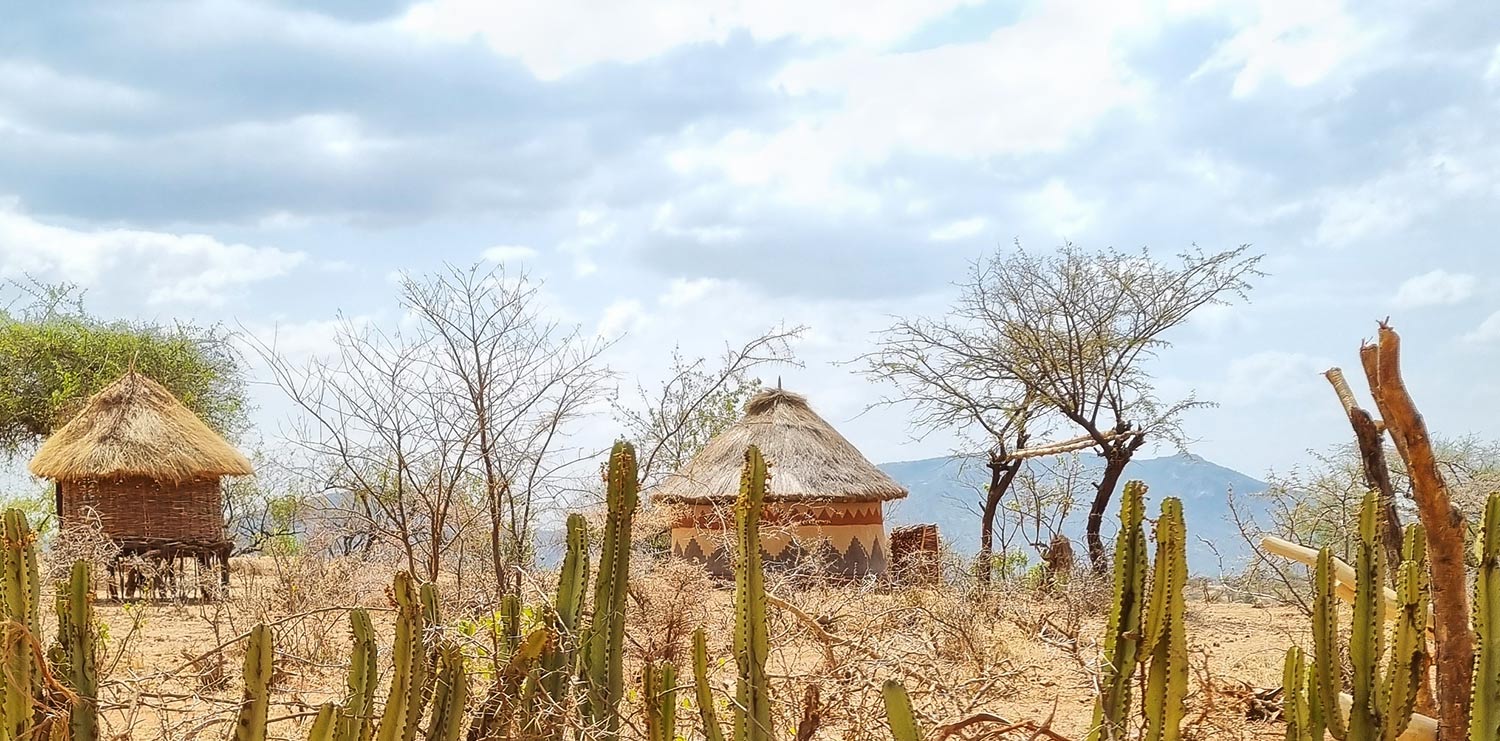
Women and children are the ones staying behind when men migrate with livestock in search of fodder and water. The conditions are harsh and getting enough to eat is not easy. The granary is getting empty fast if the dryspell continues. Photo: Ylva Nyberg
Local women and men are provided with knowledge on how to grow vegetables close to home in conditions where water access is limited. As they observe and learn, they are equipped with knowledge that they can pass on to their neighbours, and the vegetables they grow provide them with a more varied diet and make their food last longer.
We work together with communities to understand and improve the resilience of households based on their current situation and future predictions.
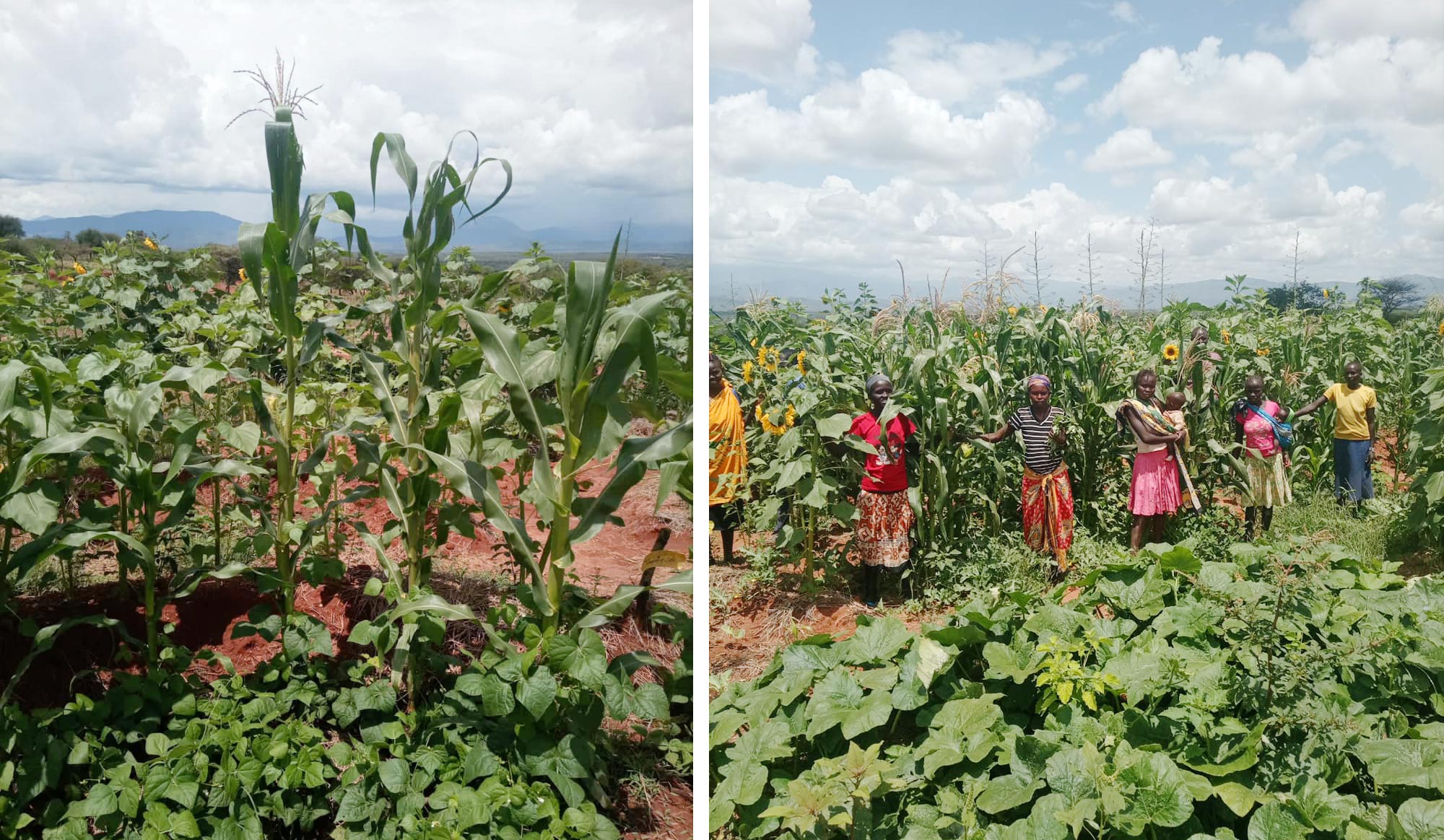
Left: The vegetables were planted in “half-moons” that are dug purposely to catch and hold water. Right: The participants in the kitchen garden training, could not believe their eyes when vegetables could do so well on the land that had been completely without vegetation earlier. Photos: Benjamin Lokorwa

Facts
SLU researchers are involved in several research projects around the drylands of East Africa. More recent projects include Drylands Transform, Drylands Restore, and Paradox, which are all part of the Triple L network. By strengthening local institutions and addressing complex challenges such as climate change, food insecurity, land and ecosystem degradation we are able to create beneficial conditions in dryland areas.
Our research involves demonstration sites, grass experiments and a unique concept known as a ‘livestock café’ – a meeting place where local stakeholders come together to share knowledge with each other. We educate people and encourage them to share their knowledge within their own communities, meet and collaborate with individuals and social groups on all levels. We share our results with local stakeholders and together, we look for different, more sustainable ways forward.
Drylands Transform assists local communities and their leaders with developing viable livelihoods while working towards sustainable transformation of the drylands.

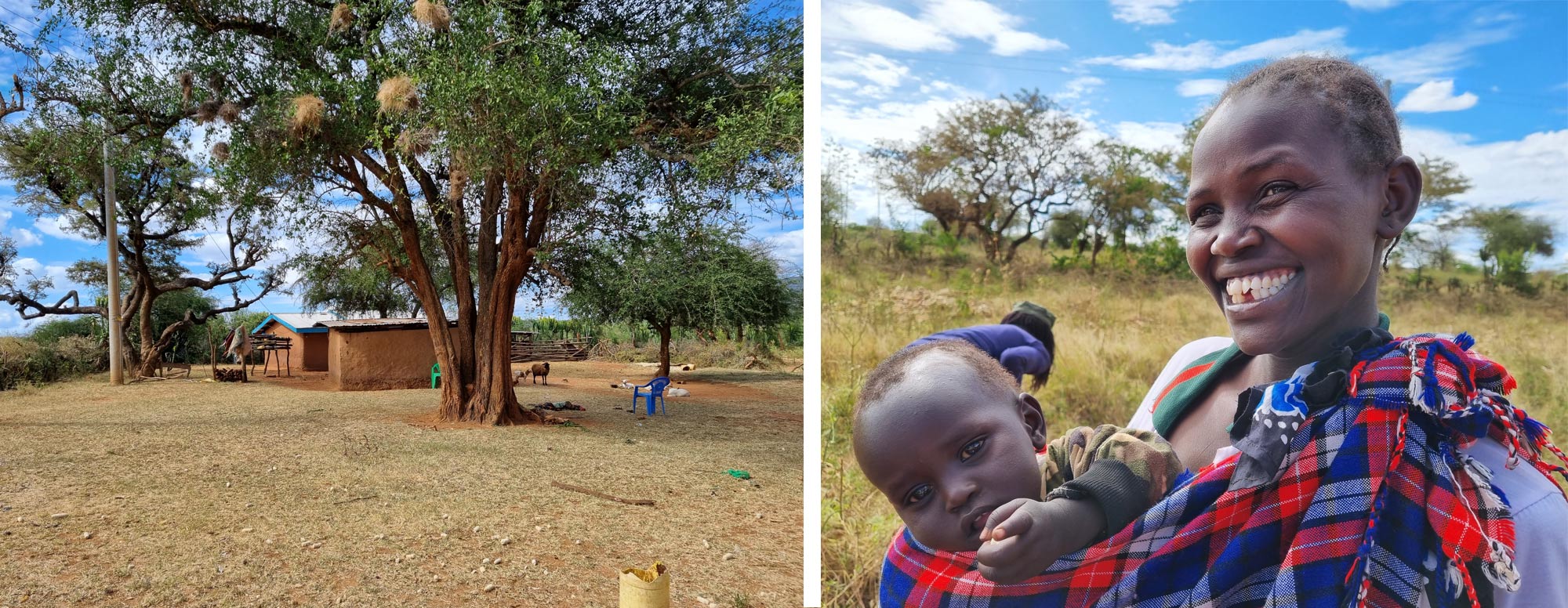
Josephine (here with her youngest daughter) is one of the women who have learnt and tried to grow vegetables in a small kitchen garden near the house during the rainy season. She is now showing her neighbours and friends how it can be done so that water is enough for short term vegetables. The kitchen garden is just close to the house. Photos: Ylva Nyberg
Story:
Ylva Nyberg, Postdoctor, e-mail
Departments of Crop Production Ecology
& Department of Soil and Environment
Press / research contact:
Ewa Wredle, Senior Lecturer, e-mail, +46 18-67 26 99
Department of Animal Nutrition and Management
Ingrid Öborn, Professor, e-mail, +46 18-67 12 74
Department of Crop Production Ecology
Production:
SLU Division of Communication, e-mail
The content is free to share in its original form if the source/url is cited.
![]()
An eye for science. We see the world through our own eyes. Sometimes we need a microscope to see the bigger picture, other times patterns are clearer at a distance. Beauty can catch your eye from the bottom of a petri dish, during a walk in the woods, or in a new data series. SLU brings together people who have different perspectives, but they all have one and the same goal: to create the best conditions for a sustainable, thriving and better world.
